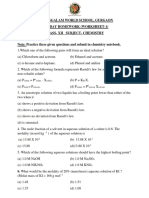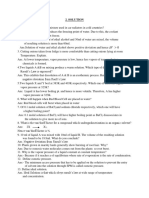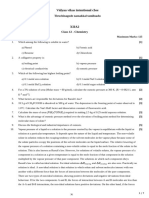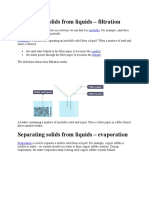0% found this document useful (0 votes)
85 views7 pagesSolutions and Solubility Concepts
This document provides solutions to conceptual problems from Chapter 12 of an unknown textbook. The problems address topics related to solutions, including identifying solutes and solvents, explaining differences in solubility, and applying concepts like Henry's law, osmosis, boiling point elevation, and freezing point depression to various scenarios. The solutions demonstrate an understanding of fundamental chemistry concepts and how they relate to the behavior and properties of solutions.
Uploaded by
Lê Nguyễn Bảo TrânCopyright
© © All Rights Reserved
We take content rights seriously. If you suspect this is your content, claim it here.
Available Formats
Download as PDF, TXT or read online on Scribd
0% found this document useful (0 votes)
85 views7 pagesSolutions and Solubility Concepts
This document provides solutions to conceptual problems from Chapter 12 of an unknown textbook. The problems address topics related to solutions, including identifying solutes and solvents, explaining differences in solubility, and applying concepts like Henry's law, osmosis, boiling point elevation, and freezing point depression to various scenarios. The solutions demonstrate an understanding of fundamental chemistry concepts and how they relate to the behavior and properties of solutions.
Uploaded by
Lê Nguyễn Bảo TrânCopyright
© © All Rights Reserved
We take content rights seriously. If you suspect this is your content, claim it here.
Available Formats
Download as PDF, TXT or read online on Scribd
/ 7






















































































